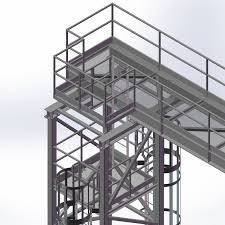Why Structural Engineering Services Are Essential for Modern Infrastructure
In today’s fast-evolving world, modern infrastructure demands more than just creative design — it requires technical precision, safety, and resilience. Structural Engineering Services form the foundation of this process, making sure that every structure, from bridges to skyscrapers, stands strong against environmental and load-based pressures. As infrastructure projects become more complex and innovative, the role of structural engineers has evolved, making their expertise essential to shaping safe, sustainable, and high-performing environments.
1. Ensuring Structural Safety and Stability
The most critical function of structural engineering is to guarantee the safety and stability of buildings and civil infrastructure. Structural Engineering Firms apply advanced calculations, load analysis, and material science to ensure that every element of a project can withstand external factors such as wind, seismic forces, and live loads. Without their input, structures would be vulnerable to collapse or degradation over time, leading to potentially catastrophic outcomes. Their expertise is particularly vital for large-scale infrastructure like bridges, airports, industrial plants, and multi-story buildings, where structural failure is not an option.
2. Optimizing Design for Cost and Efficiency
Professional Structural Engineering Design Services don’t just focus on safety — they also help optimize design solutions to reduce material usage, speed up construction timelines, and lower project costs. By utilizing CAD Structural Engineering Services and Structural CAD Drafting Services, engineers can create highly accurate 2D and 3D models that reduce errors, minimize waste, and streamline project execution. This efficiency leads to significant cost savings while maintaining quality and compliance with international standards.
3. Enabling Sustainable and Resilient Infrastructure
With climate change and resource scarcity at the forefront of global discussions, structural engineers play a key role in promoting sustainable infrastructure. Through Structural Design And Drafting Services, firms implement energy-efficient materials, green building techniques, and optimized structural systems that reduce a project's environmental footprint. From incorporating recycled materials to designing for durability and energy efficiency, structural engineers help developers and governments meet modern sustainability goals.
4. Advanced Technology in Structural Engineering
Modern structural engineering has been revolutionized by cutting-edge technologies like Building Information Modeling (BIM), 3D Structural Drafting Services, and simulation software. These tools allow engineers to visualize and resolve potential challenges before construction even begins, minimizing costly rework on-site. Structural Detailing Services also ensure that every steel connection, reinforcement, and joint is planned and executed to perfection, promoting structural integrity from the ground up.
5. Risk Mitigation and Compliance
Every infrastructure project must comply with local and international building codes, safety regulations, and industry standards. Structural Engineering Companies are responsible for ensuring that projects adhere to these stringent requirements. Additionally, by delivering precise Structural Shop Drawing Services and Structural Detailing Drawings Services, engineers reduce the likelihood of structural errors that could delay construction or increase project risks.
Conclusion
In the modern world, the demand for safe, cost-effective, and sustainable infrastructure continues to grow. Structural engineering services are at the heart of this transformation, supporting developers, architects, and contractors in bringing innovative and resilient projects to life. From concept through construction, the contributions of structural engineers are vital for shaping the cities, transportation networks, and industrial spaces of the future. Investing in a skilled structure engineering company is not just a smart decision — it’s essential for the long-term success of any infrastructure project.




Comments
Post a Comment